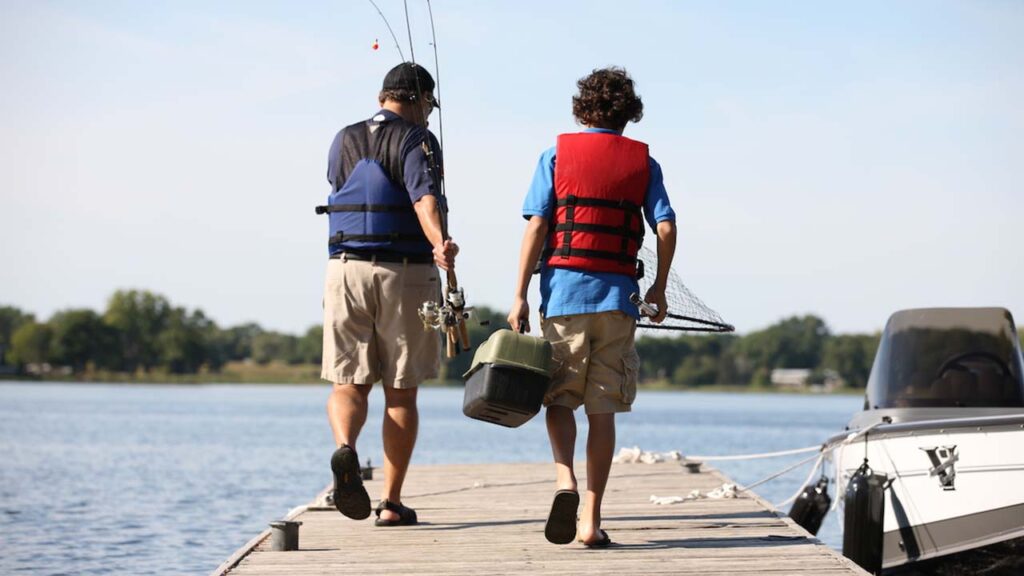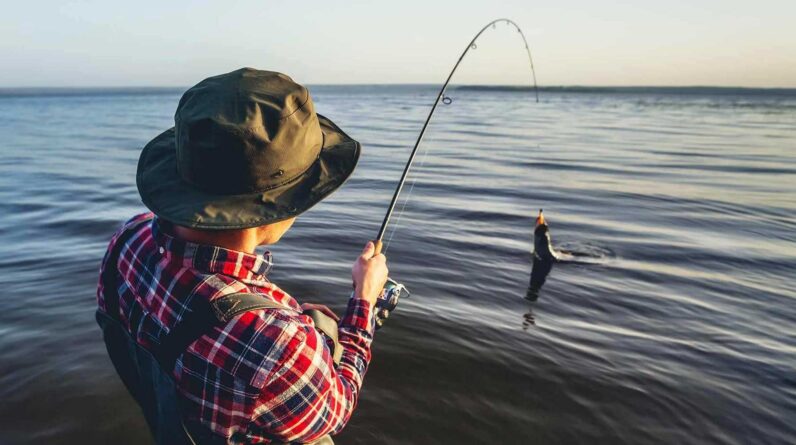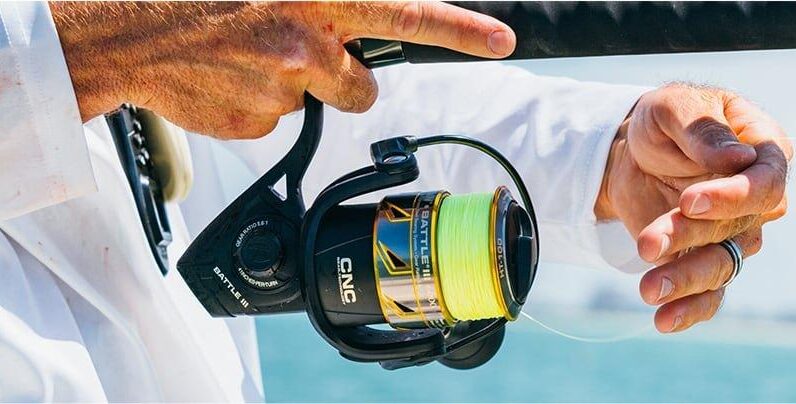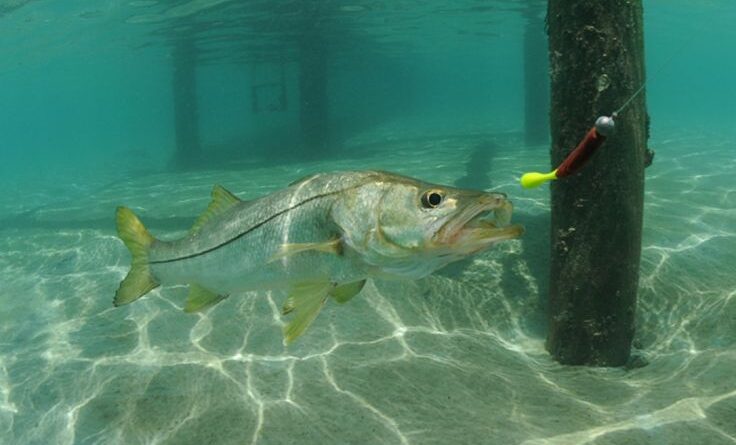According to an article published by the Red Cross, it is stated that the amount of time it takes for individuals who are not strong swimmers to drown is comparable to the time it takes to respond to a text message. Fly fishing, unlike more conventional fishing techniques, is considered an art form in its own right. When it comes to fly fishing and wading into rivers, there are certain risks involved. Water is a force to be reckoned with, and even a small error can put someone’s life at risk.
In this article, we will be discussing some important tips for staying safe while wading in the water. These tips are aimed at helping you and your fishing companions stay safe during your fishing adventures.

An Overview of Fishing and Water Safety
When engaging in fly fishing, it is important for Canadians to have water safety skills to ensure their survival in case of accidental slips or falling into the water. In addition to having good swimming skills, understanding the causes of accidental drowning can also help in reducing accidents while fly fishing. Drowning is one of the top three causes of injury-related deaths globally, and it is recognized as a significant health issue around the world. The global issue is somewhat distinct from the topic of fly fishing, but it emphasizes the strength of nature and its potential to cause harm or even death.
Many drowning accidents that occur while fly fishing can be avoided with proper precautions. Even if you think you’re safe, it’s important to take the right precautions. This could potentially save your life, or someone else’s life, or lower the chances of getting hurt in an accident. We would also like to draw attention to a statistic about alcohol consumption and drowning incidents. Based on research, alcohol consumption is a major factor in 70% of drowning incidents involving adults and adolescents.
Although fishing and drinking are often seen together, it’s important to note that consuming alcohol or other substances can greatly increase the chances of serious accidents leading to injury or even death. While it may be acceptable to enjoy a drink or two, it’s crucial to be aware of the risks involved.
Wading Safety Tips
Be Aware of the Water You’re About to Enter
Be aware of the water temperatures, be aware of the air temperatures, and if you are near a dam, be mindful of the possibility of water releases. It’s important for Canadians to be aware of the potential for flash floods caused by rainstorms that may occur upstream, even if they are not visible.
Having essential knowledge about the water system in your area can help you avoid potentially dangerous situations. With rain expected, or if you are located downstream of a dam, it is important to be able to quickly move to higher ground and ensure your safety. Every year, lives are lost to this.
When water temperatures are cold, which is often the case when fishing for trout, there is an increased level of risk. Cold water can lead to hypothermia more rapidly and make it even harder to get out of the water during an emergency.
Icy conditions can also increase the chances of slipping, becoming trapped under ice, or encountering chunks of ice floating down the river that can pose a danger. All of this should be on the mind of anyone who enjoys fishing.
Wading Belt & Staff
A wading belt can help stop water from entering your waterproof pants if you happen to fall into the water. This will help Canadian anglers to get out of difficult situations more easily. Without a wading belt, water can easily rush into the waders, which can make it harder to get out of the water or escape a situation. Wading belts should be sturdy, yet designed for easy release in case they become entangled with anything while floating downstream.
A wading staff, or walking stick, can help you maintain better stability while walking through water. In reality, it is important for everyone to use one, but it is especially crucial for individuals who require assistance with walking or may have difficulty protecting themselves in case of a fall. Using a staff can help prevent falls or slips, which can be life-saving and prevent injuries.
Let’s talk about studded boots.
Studded boots can provide extra grip on specific surfaces. This extra grip can assist fishermen in maintaining stability during periods of strong water currents. This can provide additional stability.
Move sideways and be streamlined in the water.
When you’re in the water, it’s best to avoid facing directly into or away from the current. By doing this, you are increasing the amount of your body that is exposed to the current, which leads to more resistance and force acting on you. It is generally recommended to position yourself at an angle to the water in order to minimize resistance and improve your stability.
Where a PFD (Personal Flotation Device) – also known as a Life Jacket
Most Canadian anglers do not do this, but it could save your life. They also manufacture some really cool life jackets for kayak fishing or angler activities that can be used as vests.
Stay away from areas with deeper waters and stronger currents.
In general, the less time you spend in the water, the safer you will be. We understand that wading allows you to position yourself better for catching more fish. You should always avoid situations that could potentially put you at risk. When the water currents are strong or the water is deep, it is advisable to avoid those areas if possible.
Water Skills, Swimming, and Education
When you take the time to learn about water safety skills, it not only helps prevent drowning but also ensures safe fly fishing. Before entering the water, make sure that everyone in your group is ready for any unexpected situations. Also, make sure that everyone knows how to swim confidently.
If you plan on going into a river or lake without strong swimming skills or proper training to assist others in case of emergencies, the chances of something going wrong increase significantly.
Wearing a life jacket can sometimes feel bulky, even for experienced anglers. However, it is crucial for everyone’s safety, as it can make a life-saving difference if someone accidentally falls into the water. While many people who enjoy fishing may choose not to purchase a wading life jacket, it is recommended for individuals with physical disabilities or those who are not experienced in water activities.
If you ever find yourself in the water and being carried by a current, it is important to follow the best practices to improve your chances of survival and reduce the risk of injury.
- If you’re floating downstream, make sure to keep your feet up. Avoid standing completely upright. Having your feet down can increase the chances of getting snagged on a rock or tree, which can be risky.
- Drift along the river and harness the natural flow to your benefit. Swimming directly to the shore may not be the most advisable approach. You might see a pool below where the water slows down, and your goal should be to safely reach that area and exit from there. Resisting the flow will require energy, and it’s unlikely that you can successfully resist the flow. Even in mild currents.
- Scan the water beneath you to identify potential hazards. Be cautious and keep an eye out for rocks, waterfalls, fallen trees, or any other potential hazards that could pose a risk of injury or getting stuck.
- Don’t worry about your equipment. Consider the most secure method of leaving the area.
- Swim towards your destination (which is probably quite a distance downstream). Go with the flow and make progress towards finding a safe spot to exit the river.
- Please try to be patient if possible. Stay calm, remain patient, use your common sense, and make your way to the safest location available.















